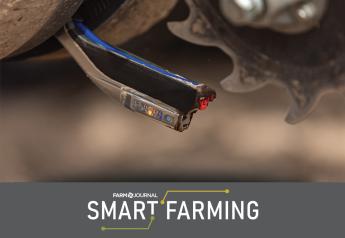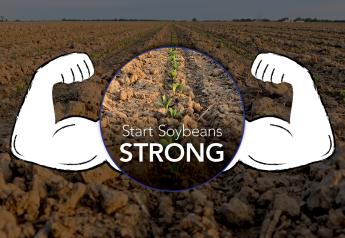Cotton Gin Converts Machines to Process Hemp
Cotton Gin Conversion to Hemp 021820
California is traditionally a big state for pima cotton. However, one gin sees growing competition from hemp and is changing its equipment to potentially process hemp fiber instead.
The California agricultural industry knows its cotton. It's been a big part of its history for decades. Tom Pires with the West Island Cotton Growers may know it more than anyone.
“I’ve been managing for about 40 years,” says Pires.
As cotton is part of the state's past, he's preparing for its future and is recognizing a shift in momentum.
Along with others in the co-op, Pires is in the process of converting the Riverdale, California gin location in to something new. It’s one of the only gins in the country working toward processing hemp for fiber.
The gin is under construction and will soon see if it can process the hemp stem into different uses. It’s a way to utilize more than just the leaf. It’s another market for the state’s growers as they work to diversify.
“The high concentration of the CBD or the flower portion, that’s gone,” says Pires. “This came through a regular grain harvester or a combine. It’s now modified to process hemp or to harvest hemp.”
Businesses are doing the same and looking for efforts to find new ways to use hemp.
“You can make it be used for construction materials, especially on insulation we present,” says Ryan Loflin, owner and CEO of Rocky Mountain Hemp. “This is just shown on a mechanic piece of equipment but it can be used on your air conditioning but you can put it on the walls with drywall.”
This is as the hemp industry faces growing pains.
The Food and Drug Administration has yet to regulate the crop, which is expected to happen this year. Industry officials say the uncertainty is one reason why CBD oil prices have collapsed. Industry leaders say an increase in acreage and lack of processing is another.
“We have a large supply,” says Michael Bowman, co-founder of First Crop. “A lot of growers jumped in last year without take off contracts. A lot of supply is still sitting in barns. We’ve had a lack of extraction capacity. [It’s] the perfect storm to put pressure on these prices.”
As those in the California industry recognize a rich cotton history, they make way for tomorrow’s crop. Perhaps, it’s a new way to process it too.
This comes during a time when one of the first pieces in the acreage puzzle is now in place.
The National Cotton Council releasing its Planting intentions survey for the 2020 season. NCC says U.S. cotton producers intend to plant 13 million acres this spring. That's down 5.5% from last year.
Their annual survey went out in December with results announced at the organization's Annual meeting in New Orleans. In the southeast, farmers estimate 9 percent fewer acres of upland cotton, including a near 12 percent drop in Georgia. Mid-South growers estimate a 6.5 percent decline year over year with Tennessee also expecting a near 12 percent as more corn and soybeans go in the ground.
Southwest acres are expected to fall 3.4 percent with both Kansas and Oklahoma planning to sow more acres than last year. Out West, farmers expect 20.5 percent fewer upland cotton acres in 2020. NCC says current prices tend to favor corn, soybeans and wheat and that's likely the driving force behind lower acre expectations.
"Cotton prices are down, corn and soybean prices are down as well,” says Jody Campiche, the vice president of economics and policy analysis with the National Cotton Council. “When you look at the price ratios [with cotton to corn and cotton to soybean price ratios], when those ratios are down, we generally see a decline in cotton acreage. That's what we're seeing and we're seeing wheat prices are higher than what they've been. In the survey, some said they were going to plant more wheat. Most respondents didn't necessarily say they'd plant more soybeans, it was mostly corn."
USDA will release its Prospective Plantings report at the end of March.







